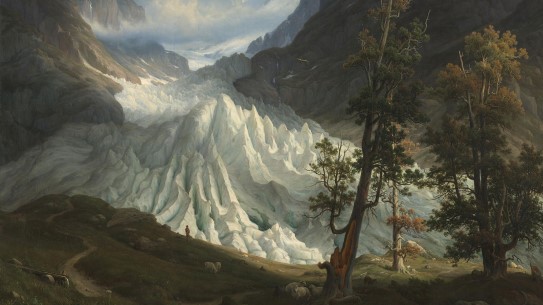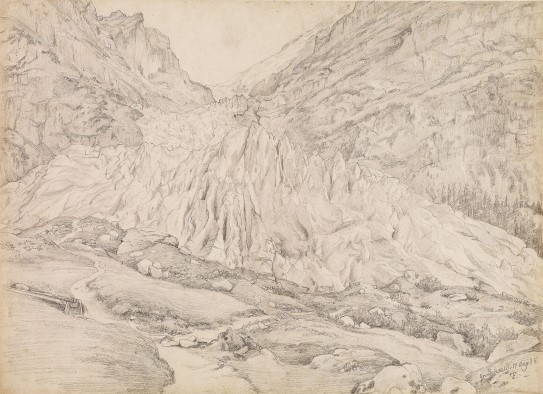Thomas Fearnley in Dialogue with Climate Change

The aim of this PhD project entitled “Thomas Fearnley and the Frozen Giant. The Grindelwald Glacier (1838) between Science, Imagination and Experience” is to conduct a case study of Thomas Fearnley’s The Grindelwald Glacier (1838) using an ecocritical approach. The project seek to activate Fearnley’s work as a witness to the Little Ice Age in dialogue with the current global crises.
The Grindelwald Glacier (1838) is one of Thomas Fearnley’s (1802–1842) main works and considered a highlight in Norwegian landscape painting. It was acquired in 1839 by the National Gallery as one of the first pieces of contemporary Norwegian art. As a visual reminder of the once so grandiose glacier in the Swiss Alps, it now stands as a symbol of climate change. However, a comprehensive case study of this major work has yet to be done.
The PhD project focuses on three research avenues: 1) examination of the background for Fearnley’s choice of the glacier motif in the context of early 19th century geological investigations; 2) analysis of Fearnley’s compositional choices in relation to anthropocentric and ecocentric views of nature; 3) investigation into how Fearnley’s painting manifests a personal experience.
The PhD project is conducted by Trine Nordkvelle, supervised by dr. Simon Baier (University of Oslo) and dr. Isabelle Gapp (University of Aberdeen). The candidate participates in the Environmental Art Research Group at the UiO, and is affiliated with the Chryosphere and Climate Change Research Group at the University of Aberdeen.
The PhD is funded by the Fredriksen Family Art Company. Findings from the project will be included in an upcoming exhibition on Thomas Fearnley.
